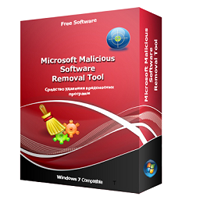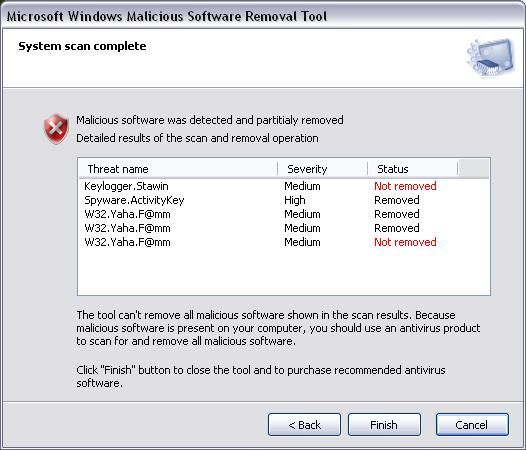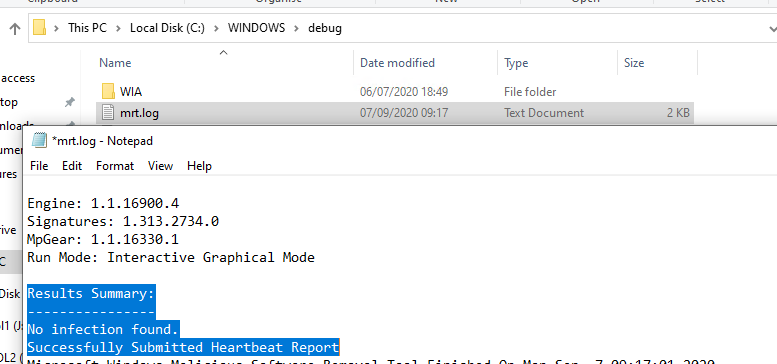

- #UNINSTALL MALICIOUS SOFTWARE REMOVAL TOOL WINDOWS 10 HOW TO#
- #UNINSTALL MALICIOUS SOFTWARE REMOVAL TOOL WINDOWS 10 ANDROID#
- #UNINSTALL MALICIOUS SOFTWARE REMOVAL TOOL WINDOWS 10 PC#
- #UNINSTALL MALICIOUS SOFTWARE REMOVAL TOOL WINDOWS 10 FREE#
Some files won’t be deleted as the application is still active.
#UNINSTALL MALICIOUS SOFTWARE REMOVAL TOOL WINDOWS 10 FREE#
Removing the temporary files would also clear the unnecessary clutter from your system and free up valuable space. You should delete all the temporary files and folders regularly for the smooth running of the system. The temporary files folder can also be a carrier of malicious files. Still, the malware persists in your PC, then follow the upcoming methods.

You can select number “4” (Enable Safe mode) to enter into the Safe Mode.Īfter entering into the Safe Mode, you may find that your system runs faster, and then this is all because of the malware infection.


So, once getting into the Startup Settings screen, tap the “restart” button from the list of settings options.
#UNINSTALL MALICIOUS SOFTWARE REMOVAL TOOL WINDOWS 10 PC#
#UNINSTALL MALICIOUS SOFTWARE REMOVAL TOOL WINDOWS 10 HOW TO#
How to Remove Malware from Windows 10? Step 1: Switch over the PC to Safe mode The only fruitful way to remove malware from Windows for sure is using effective anti-malware software. If you’re already experiencing all these issues, then your PC is probably affected by malware programs. The symptoms include unfamiliar icons on desktop, anti-virus protections automatically getting deactivated, and running out of hard drive space, for no proper reason. You also see unusual error notifications, and the battery drains quickly. Sometimes your system gets crashed unwanted, websites or programs are automatically accessed without your input. They include considerably slowed-down PC performance, consistent and deliberate ad pop-ups. The signs of malware infections can wildly vary based on the awful activities it does on your Windows PC. If you’re fretting to know, whether you have a malware infection on your Windows PC check for the following indications. These malicious software programs can perform a variety of functions, such as deleting sensitive data encrypting altering stealing monitoring users’ activity without their permission, and even hijacking the core computing functions. The list includes viruses, Spyware, worm, Phishing, Trojan horse, Ransomware, Backdoors, Rootkits, Keyloggers, Grayware, etc. There are numerous types of these malicious programs that are very much enough to put you at absolute security risks. To put it in a clearer manner: It is considered to be an exasperating or destructive type of software, which creates security threats without the users’ permission. Malware is the short form for referring a Malicious Software that can be used to compromise a PC.
#UNINSTALL MALICIOUS SOFTWARE REMOVAL TOOL WINDOWS 10 ANDROID#
How to Remove Malware from Android What is a Malware?


 0 kommentar(er)
0 kommentar(er)
